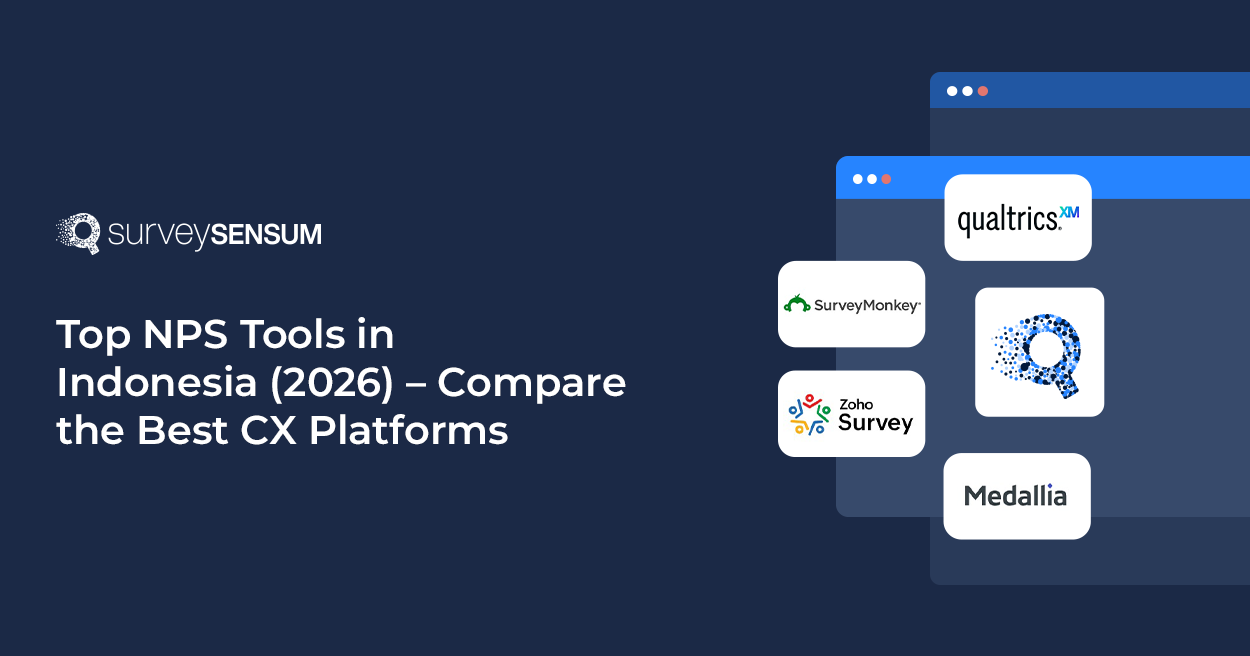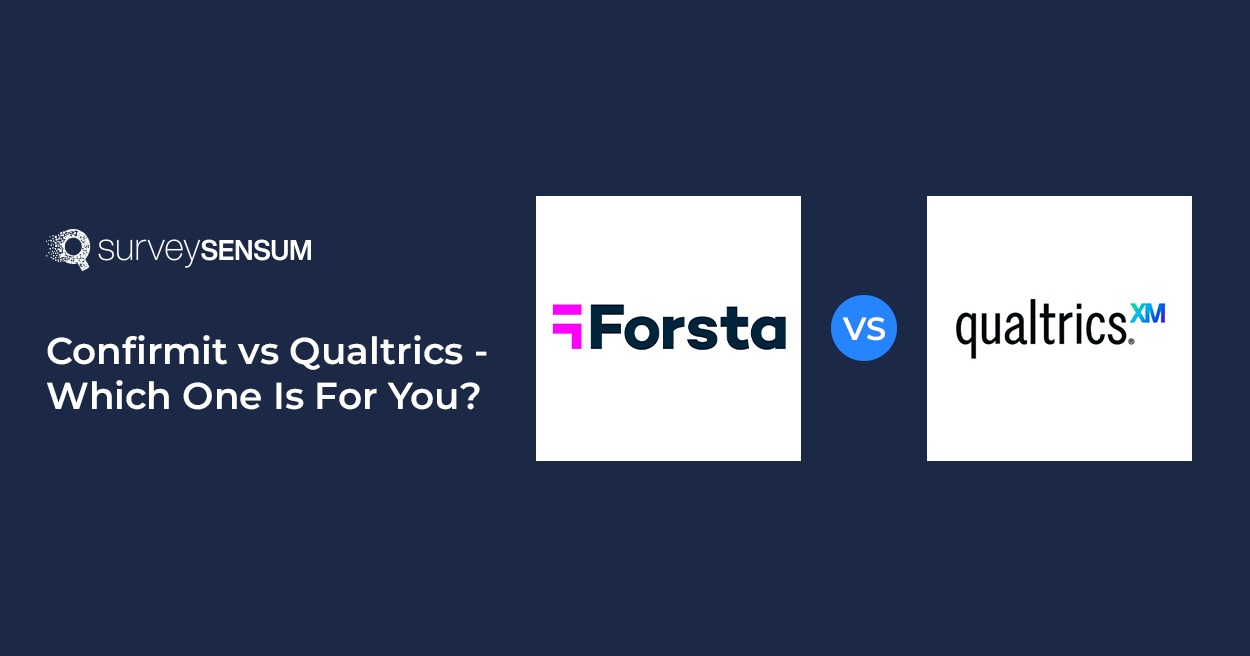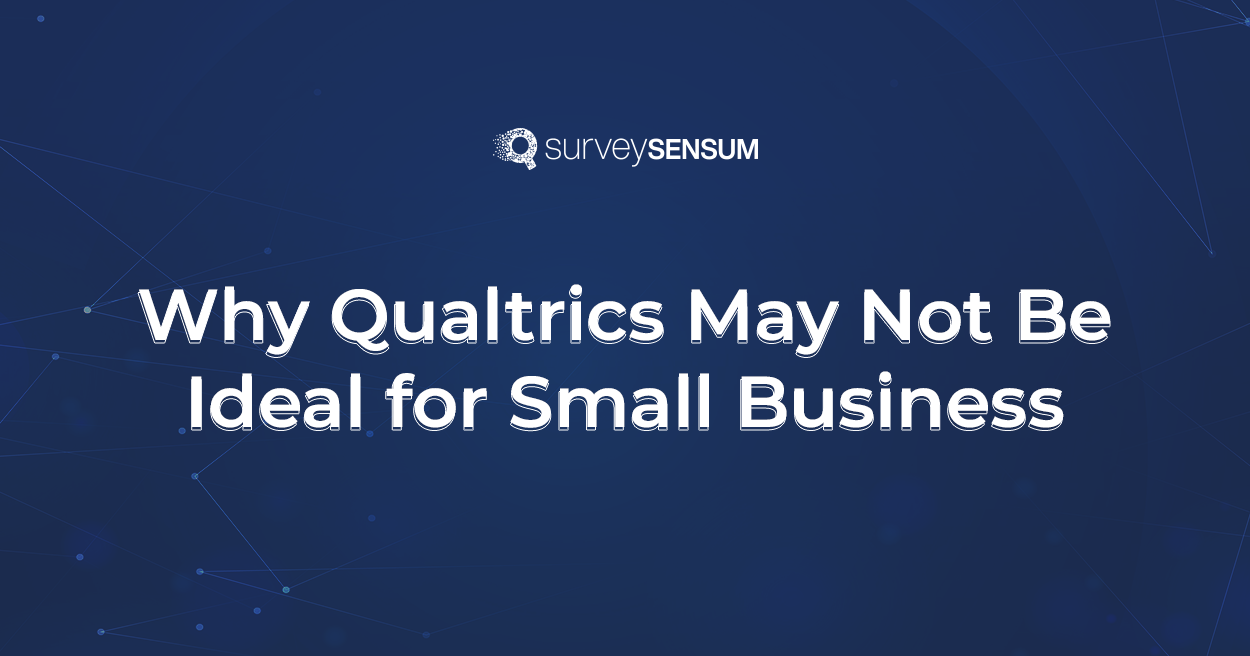

SAAS is a rapidly growing industry, almost 20% per annum according to a study by Harvard Business Review, businesses that actively engage with customer feedback witness a 15-20% increase in customer retention rates, leading to a staggering 50-100% boost in revenue.
However, the flip side of this coin is equally illuminating. Ignoring or neglecting customer feedback can prove detrimental, sometimes with irreversible consequences. Research conducted by Microsoft revealed that a staggering 52% of customers worldwide switched to a competitor due to poor customer service experiences.
Feedback Strategies for SaaS startups are crucial for their success. Yet, despite the clear benefits and dire consequences, integrating customer feedback into the fabric of innovation and growth presents a unique set of challenges. SaaS startups often find themselves navigating the delicate balance between meeting customer expectations and driving forward with innovative solutions. Since startups have limited budgets so, countering the challenges posed by competitors with negative reviews and feedback about their products becomes challenging. However, it is an area where your marketing and feedback strategies for SaaS startups can be effective.
As a startup, you might wonder how to integrate customer feedback into the SEO saas marketing strategy to grow the SAAS startup faster. So here I have interviewed some digital marketers worldwide, and they shared their best strategies to integrate customer feedback for SAAS growth.
Bobbin D’silva, founder at SAASTalkies

Use customer feedback tools and platforms
“By using customer feedback tools and platforms, you can gain valuable insights into your customer’s needs and preferences, which will allow you to make informed decisions and improve your product or service offerings. Customer feedback platforms and tools have various features and automation software built through which you can collect, analyze, and act upon customer insights in just one click.
These platforms provide a centralized location for managing and tracking customer feedback, making it easier for entrepreneurs to monitor trends and identify patterns. By using these tools, startups can streamline their feedback management process, ensuring that every customer’s voice is heard and addressed. Additionally, these platforms often provide features such as sentiment analysis and data visualization, allowing you to gain deeper insights into customer satisfaction levels and prioritize improvements accordingly. By consistently monitoring and responding to customer feedback, SAAS startups can build a strong reputation for their commitment to customer satisfaction which ultimately helps your business faster.
Furthermore, customer feedback tools and platforms can also help SAAS startups foster a sense of community and loyalty among their customers. By actively engaging with customers and responding to their feedback, startups can create a positive brand image and build long-lasting relationships with their target audience. This can lead to increased customer retention rates and referrals, ultimately driving the growth of the startup.”
Sarah Jeffries, Founder of CPR Training

Leverage customer testimonials and case studies
“Feedback strategies for SaaS using customer testimonials and case studies can be a game-changer when it comes to growing your business faster. Customer feedback is not only valuable for improving your product or service, but it also serves as social proof that can build trust and credibility with potential customers.
By implementing effective customer feedback strategies, you can showcase the positive experiences of your existing customers and attract new ones to your SAAS startup.
One of the most effective ways to leverage customer testimonials is by featuring them prominently on your website or landing pages. When potential customers visit your site, they want to see real-life examples of how your SAAS product or service has benefited others. By displaying testimonials from satisfied customers, you can provide social proof and build trust instantly. These testimonials should highlight specific outcomes or benefits that customers have experienced by using your SAAS solution. By including their name, company, and even a photo if possible, you can add credibility to their testimonials.
A case study goes beyond a simple testimonial by providing a detailed analysis of how your SAAS solution helped a specific customer solve a problem or achieve a goal. By showcasing the before-and-after journey of a customer, you can demonstrate the value and effectiveness of your product or service. Case studies should include specific metrics and data that show the tangible results achieved by the customer. This evidence-based approach can be highly persuasive for potential customers who are evaluating your SAAS solution.
To maximize the impact of customer testimonials and case studies, consider sharing them across various marketing channels. Whether through social media posts, bulk email campaigns, or blog articles, make sure these success stories reach a wide audience. Additionally, encourage your existing customers to share their positive experiences with others through word-of-mouth referrals or online reviews. When potential customers see that others have had positive experiences with your SAAS startup, they are more likely to trust and choose your solution.”
Mark McShane, Director at Boiler Cover UK

Implement feedback loops and continuous improvement processes
Establishing a feedback loop is a highly effective customer feedback strategy for SaaS startups to grow. This involves actively seeking feedback from customers through surveys, interviews, or online forums, and using this feedback to make improvements to the product or service.
By regularly engaging with customers and understanding their pain points, startups can identify areas for improvement and make the necessary changes to enhance their offerings.
By constantly analyzing data and metrics, startups can identify patterns and trends that indicate areas for improvement. This could include analyzing user behavior, monitoring customer satisfaction scores, or conducting A/B testing to optimize different aspects of the product. By identifying areas for improvement and implementing changes based on data-driven insights, startups can continuously evolve and enhance their product to meet the changing needs of their customers.
Implementing feedback loops and continuous improvement processes not only helps in building a better product but also strengthens the relationship between the startup and its customers. By actively involving customers in the development process, startups can build trust and loyalty, leading to increased customer satisfaction and retention. Additionally, by continuously improving their product, startups can stay ahead of the competition and attract new customers who are looking for innovative solutions.
Understand customer expectations with real-time feedback with SurveySensum
Graham Grieve, SEO Consultant at A1 SEO Oxford

Retain Customers Through Continuous Optimization
Retaining customers is essential for the rapid growth of a SaaS startup, and continuous optimization driven by customer feedback is a powerful strategy. Actively seek feedback from customers to identify pain points, areas for improvement, and new feature requests.
Regularly analyze usage data and customer behavior to identify bottlenecks or opportunities for optimization. Implement iterative updates and enhancements based on customer feedback to continually refine the user experience. Communicate with customers about product updates and improvements to showcase your commitment to their satisfaction. By continuously optimizing your product based on customer feedback, you can enhance user engagement, increase customer loyalty, and ultimately drive the growth of your SAAS startup.
Liam Quirk, Managing Director at Quirky Digital

Timely Monitor and respond to online reviews and ratings
By actively engaging with your customers through online reviews and ratings, you not only show that you value their opinions, but you also have the opportunity to address any concerns or issues they may have. This level of customer service can result in increased customer loyalty and satisfaction, ultimately leading to faster growth for your SaaS startup.
To effectively monitor and respond to online reviews and ratings, it is important to have a well-defined strategy in place. Firstly, you need to establish a system for tracking and monitoring customer feedback across various platforms such as review websites, social media, and forums. This will allow you to stay on top of what your customers are saying about your product or service. Secondly, it is crucial to respond promptly and professionally to both positive and negative reviews.
By acknowledging positive feedback and expressing gratitude, you can reinforce the positive experience and encourage further advocacy. On the other hand, responding to negative reviews with empathy and a willingness to address the issue demonstrates your commitment to customer satisfaction. This level of responsiveness not only improves the overall customer experience but also showcases your dedication to continuous improvement.
Launch effective surveys and gather customer feedback the right way with SurveySensum
James Lee, Founder at Monetized Future

Utilize Customer Journey Maps
In the highly competitive SaaS market, utilizing customer journey maps stands out as a highly effective strategy for improving customer retention. These maps offer a holistic, visual representation of every customer interaction, helping businesses understand and address customer pain points, streamline processes, and enhance overall service delivery, thus fostering customer loyalty and reducing churn.
Consider the example of a SaaS company that provides project management software. Upon analyzing its customer journey map, the company noticed a significant usage drop during the onboarding phase due to users finding the tool too complex. In response, the company implemented a more user-friendly, step-by-step onboarding tutorial. As a result, user engagement and satisfaction increased, leading to improved customer retention. This demonstrates how adopting customer journey maps as a core part of a SaaS startup’s customer retention strategy can offer actionable insights, driving growth and success in this highly competitive sector.
Derek Bruce, Managing Director at FirstAidatWorkCourse

Collaborate with customers through co-creation and beta testing
Co-creation and Bita testing can play a very significant role in the growth of the SAAS startups business. By involving customers in the development process, startups can tap into their valuable insights and ensure that their product meets the needs and expectations of their target audience.
Co-creation is a process where startups actively involve their customers in the creation and development of their products. This can be done through various means, such as conducting surveys, hosting focus groups, or even inviting customers to participate in brainstorming sessions. By engaging customers in this way, startups can gain a deeper understanding of their preferences and pain points, allowing them to tailor their products to better meet customer needs. This not only increases customer satisfaction but also creates a sense of ownership and loyalty among customers, who feel like they have played a part in shaping the product.
Beta testing is another crucial step in growing a SAAS startup. By offering a beta version of their product to a select group of customers, startups can gather valuable feedback on its performance, usability, and overall user experience. This allows them to identify any issues or areas for improvement before launching the product to a wider audience. Beta testing also provides an opportunity for startups to showcase their commitment to customer satisfaction and engagement, as customers feel valued and appreciated for their input.
Understand customer expectations with real-time feedback with SurveySensum
Michael Batalha, Founder and CEO at Emercury

Email survey for new and existing products
Email is one of the oldest and best ways to engage with audiences and prospective customers. So it can be integrated to grow your SAAS business. Surveying existing products and asking your customers about its merits and demerits or their satisfaction level will give you a chance to improve them promptly and make them continuing customers.
On the other hand, feedback about new products will give a glimpse of the prospective potential ROI and if the proposed products would succeed or fail, and will help you make timely decisions.
There are many types of survey emails related to customers and products, like –
- Product Feedback Survey emails
- Customer Service Feedback Survey Emails
- Churn Feedback Survey Emails
- Onboarding Survey emails
- Post-Purchase Survey emails
So, you can integrate all of these into SAAS marketing strategies to boost its growth and profitability. Moreover, to do these, there will be a need for email marketing software that can send bulk emails to your audiences and manage the email list and campaigns. So it would be better to try some of the best email software in the market, like Emercury or Mailchimp, to get better results and hassle-free operation.
Vidyarthi Ram, founder of RankCare

Get feedback on competitors’ products
Getting feedback on competitors’ products is the best strategy to grow your SAAS business faster. At a time when everyone talks about using your audience’s feedback for product improvement and growth, it is one step forward to get feedback from competitors’ audiences. It will give you their pain point and your competitor’s strengths and
weaknesses, which you can use to improve your products and offer them better alternatives.
Moreover, big organizations always use this strategy to spy on competitors’ markets and customers, and then they launch new, improved products to lure their existing customers. The same can be done for SAAS products as well. Getting feedback from competitors’ customers will give you a chance to start your SAAS business with improved products and help you gain the market by offering them better alternatives at competitive prices.
Anoop Singh Yersong, founder of Yersong Digital

Automate, prioritize and capitalize
As a startup, you have limited resources. Your SaaS product roadmap is already well-defined with not a lot of space for ad-hoc changes. Consequently, it is impossible to implement each and every single customer feedback.
So, to increase your revenue and achieve hyper-growth, you need to prioritize and set quantitative weightage for feedback.
You can do this by balancing between the fundamentals – product-led growth (PLG), marketing-led growth (MLG) and sales-led growth (SLG). That’s where automated CX workflows and integrations will help. The first step is to get a customer feedback tool that has deep integration functionality with your CRM and all the other tools your team uses for daily operations.
Next will be the implementation of a 360-degree CXM strategy. For instance, to boost your PLG, you can use in-product or in-app surveys, in MLG, focus on website or email feedback, while SLG revolves around your post-meetings or post-demo feedback. With this approach, you and your team will be able to identify and analyze the concerns raised by your high-value ICPs and customers, at all major touchpoints.
You may not have hundreds of team members but as a SaaS startup, your competitive advantage is – your agile change management. So, if and when you see something that needs change and it is correlated with your revenue, that’s where your team needs to focus. And once you make those changes, be it within your product, marketing, sales, or service, my advice as a B2B marketing consultant is to make sure to let your customers know about it. Because that will go a long way.
Whether you are a low-touch or high-touch SaaS, providing freemium or enterprise options, there is a 90% chance that your customer has checked out your competitors. They are well aware of the plethora of options available in the market, and this is where one of your USPs could be your ability to close the feedback loop faster than yours!
Final Thoughts
In conclusion, the journey of a SaaS startup toward accelerated growth is intertwined with the effective integration of customer feedback strategies. The insights shared by experienced marketers shed light on the diverse approaches available to navigate this terrain successfully.
Moreover, strategies like co-creation, beta testing, email surveys, and even gathering feedback on competitors’ products provide innovative ways to glean insights and refine offerings. Prioritization, automation, and capitalization of feedback are also emphasized as essential elements for efficient resource allocation and revenue generation.
In the dynamic landscape of SaaS startups, where competition is fierce and resources are limited, the ability to integrate customer feedback effectively can be a game-changer. By embracing a customer-centric approach, startups can not only meet the needs of their target audience but also differentiate themselves in the market and pave the way for sustained success and rapid growth.















